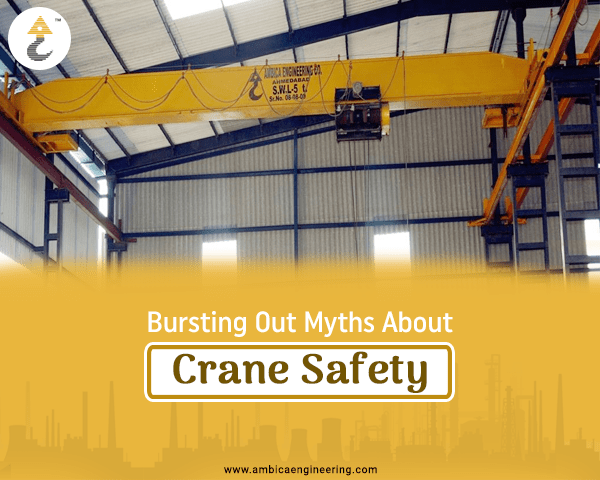Warning labels are mentioned on every product and there is a reason why they are stated. We have to follow those labels to avoid any difficulty or problem. And in this case, ‘Ignorance is not at all a bliss’. Even a coffee cup has a warning that ‘it is hot’. It is strange that in spite of these warnings, many people still suffer because they just ignore the message. Unfortunately, the warning messages have failed to bring out its message in an effective way.
The worst scenario is the presence of misconceptions in a process that is dangerous for safety. In the case of different types of cranes like Jib crane, Gantry Crane, EOT Crane, and many others, the misconceptions have increased the risks and have affected the safety of the process. It is important to be aware of such misconceptions to ensure safety and to save lives. Ambica Engineering Co, a popular crane company in India, through this blog, is willing to bring awareness regarding the safety. We consider it as our responsibility to inform people about the safety myths practiced commonly.
Bursting Out Misconceptions About Crane Safety:
Regular inspections are unnecessary as the crane is working properly
This misconception of not conducting regular inspections have affected many industries. No matter what, it is important to conduct regular inspections of the different cranes like Jib crane, Gantry crane, EOT crane, etc. to ensure safety and to avoid any danger. Many workers assume that if the crane was working properly last week it will work the same for next week. But timely inspection is a part of safety control and it should not be avoided.
Not to worry about overloading as the crane has a safety factor
This is the most common misconception about overhead crane which has affected many lives. Cranes are built to be safe up to the given limit. Overloading may lead to an accident.
For reaching at the height, lifting the crane until it hits the upper limit switch
The fact is that the upper switch is designed to prevent hook assembly from colliding with the drum. But as people misguide that as the limit for lifting the crane, it results in hook block and colliding with the drum which leads to the dropping of the load. It is important to burst out this myth so that people do not make the same mistake.
All the hoists have secondary brakes so it is safe to work under load
All the hoists have the system of primary and secondary brakes but it should still warn a worker to not work under a load. The brakes might not handle the pressure of the load at times. It is important to warn the staff to not work under a load to ensure safety.
It is the responsibility of the owner to read out all the warnings and clear all the myths to the workers, operators, and people involved in the process. Put emphasis of the safety guidelines and keep your plant/industrial environment safe.

